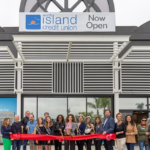SAN DIEGO–With the goal of clarifying state law on greenhouse gas emissions, the SANDAG Board of Directors decided Friday to appeal a recent Fourth District Court of Appeal decision on the environmental review of its regional transportation plan up to the California Supreme Court.
“The Board decided that it is our responsibility to press forward with this case,” said SANDAG Board of Directors Chair Jack Dale. “We’ve done our absolute best to follow the law in everything we’ve done. At this point, the law needs to be clarified – not just for our region, but for every planning agency and city in California.”
On November 24, a three-judge panel of the Fourth District Court of Appeal issued a split decision on whether SANDAG fully complied with state environmental laws in preparing the environmental impact report (EIR) for its 2050 Regional Transportation Plan (RTP). Two of the three justices concluded that the EIR needed to do more analysis. The third justice disagreed, concluding that SANDAG had applied the correct standards in analyzing the potential environmental impacts of the RTP.
“Left unchallenged, this appellate court decision will make it even more difficult for agencies and cities to know which regulations to follow and what standards to apply,” Dale said. “The confusion will result in slowing down all projects in the state – transit projects, bike projects, pedestrian improvements, and highway projects.”
SANDAG completed the 2050 RTP – a long-range planning document that outlines $214 billion in transportation investments – in 2011. The Cleveland National Forest Foundation and other petitioners subsequently filed suit challenging the EIR, a separate document that analyzes the environmental impacts of the RTP.
Among other issues raised in its defense, SANDAG argued that it followed the direction it received from the state as it applied various laws regarding greenhouse gas emissions. But in some instances that direction was ambiguous, particularly given the fact that SANDAG was the first metropolitan planning organization (MPO) in California to produce an RTP under new greenhouse gas reduction laws.
In an important element of the appellate court ruling, the majority concluded that SANDAG should have based its greenhouse gas analysis on the reduction of overall driving in the region, and disregarded the issue of reducing traffic congestion. SANDAG’s long-standing position has been that it is taking a multipronged approach to greenhouse gas emissions reductions.
“How many miles cars drive is an important measure in greenhouse gas reductions, but it’s not the only measure,” Dale said. “Future technologies may dramatically cut greenhouse gases from vehicles. So we must pursue many options – including increasing transit, biking, and walking. We are looking at future projects that increase those choices – and trying to find a combination of projects that the region is willing to support.”
Since the completion of the 2050 RTP, several other MPOs have issued RTPs for their regions and the information included in them has evolved. Updates to RTPs are required every four years, and with each update, SANDAG seeks to improve on the previous iteration of the plan. As required by law, SANDAG is currently working on an update to the 2050 RTP and EIR.








